The Bansenshukai
A Period Fantasy Document
By Paul 'Batman' O'Brien
B.A., N.C.E.H.S., Dip. Acu., Adv. Dip. OBB, Cert Clin. Med. Pn1, PN-SSR, PN-NCA, M.AFPA, M.ETCMA, M.C.Th.A.
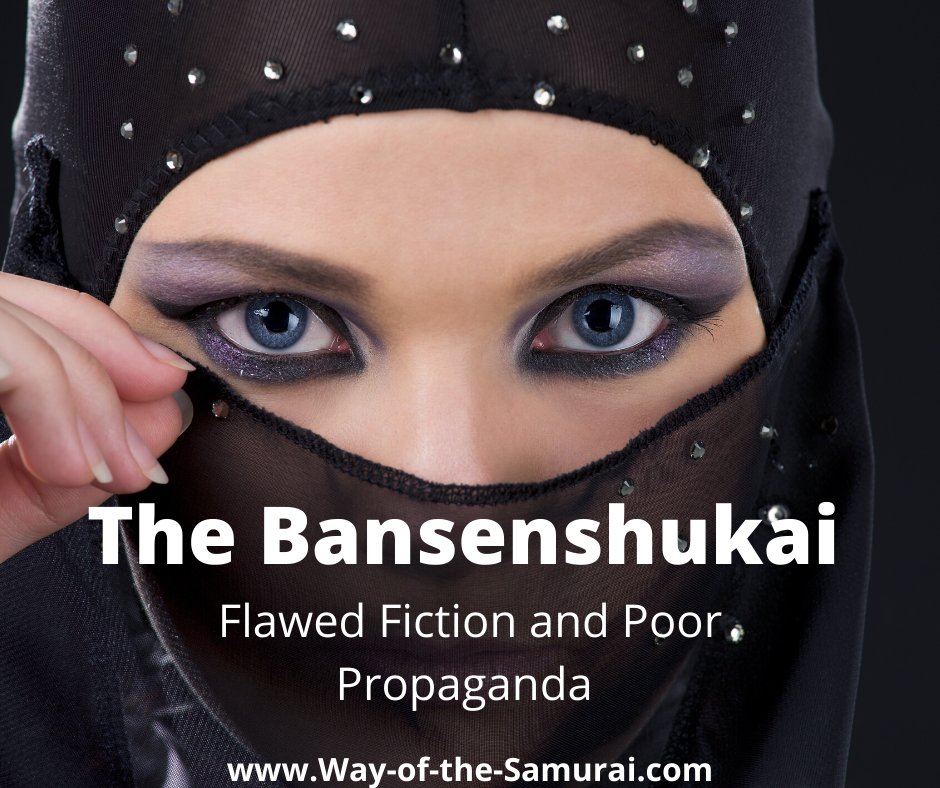
The Bansenshukai is a period fantasy document. In this article, Part 3 of a series on "ninja documents", I'll explain in detail why this "ninja-bible" is nothing of the kind. You'll learn about the lies, misinformation, and mythology, but more so learn the true secret of this text - that it is a failed piece of political propaganda.
There are so many problems with the Bansenshukai that I am nearly at a loss for where to begin. Again, to reiterate a point I made in the earlier article on the Shoninki - the Bansenshukai is not viewed as a historically accurate or reliable document by any legitimate academic or historian regarding “ninja”.
Which is why it was pretty much ignored (even in it’s own time) up until Ninja-fan boys came across it in the twentieth century and reinterpreted it as a “ninja-bible”. Which it absolutely isn’t.
The Bansenshukai - An Unreliable Narrator
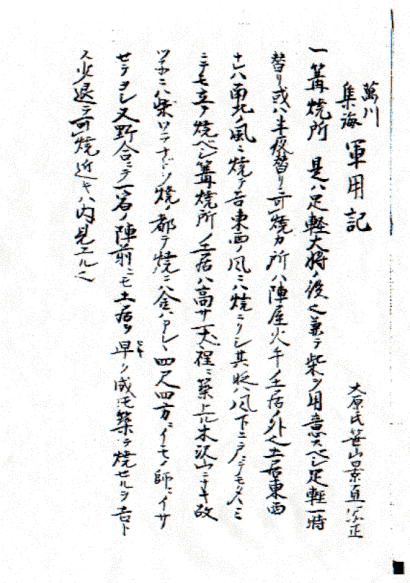 The Introduction of the Bansenshukai
The Introduction of the BansenshukaiThe first issue is that of provenance. It is purportedly written by “Fujibayashi Masatake”, of the Fujibayashi ninjutsu tradition in or around 1676. There are several issues with this.
1. There is no actual confirmatory evidence or supportive evidence to suggest that he's actually the author. But let’s roll with it for a second, as this connects it to Kishu Ryū, and the Shoninki, given that it was the same family that produced these works, and in light of that, I remind you, academic consensus states, “Wanatani and Yamada (1978:215) and various other historians consider this document (the Shoninki) and others related to Kishu ryū to be unreliable". (1)
2. The author is writing about a period of history and the alleged techniques used well after the fact. It is not a contemporary account, but compiled and written over 70 years after the fact at best. And this will be very clearly demonstrated a little later as the document is woefully inaccurate regarding historical events for which we have actual accounts that have multiple independent cross checks available.
3. We don’t actually have an original document to work from. The original handwritten text of the Bansenshukai has been lost to time. The versions used now are, in fact, copies made by individuals during the Edo period. As such we have no clue as to the authenticity or accuracy of these copies. They could be exact, they could direct copies, they could be inexact direct copies and they could be copies of copies of copies...all of which become progressively more corrupt as time goes on. I’ve personally seen 5 different versions of the text, some have totally new sections added in, others are missing chunks and still others explain the same things, but totally differently. (For those interested, the version I primarily refer to most often is the Yoshio Imamura edition published in 1966. Nihon budō zenshū Volume 4, Tokyo, Jinbutsu Ōraisha).
Now, there is one other big issue here. The original (or original copies I should say) aren’t written in Japanese, at least not today’s Japanese. Instead they are written in kanbun which is a classical Japanese version of Chinese. And this presents a further issue with the current “translations” available.
The version of the Bansenshukai offered by noted fraud Antony Cummins is woefully inaccurate. In the Cummins case, he cannot read modern Japanese let alone classical Japanese. His translator, Yoshie cannot read classical Japanese either. So what happens is that she parses a modernised Japanese version into basic English. Then Cummins rewrites that into what he thinks it should be (2). This is as far away from genuine historical or academic work as you can get. It results in multiple errors, and the proliferation of debunked misconceptions throughout his version. Don Roley (actually trained in Japanese translation and works in the field) and Roy Ron (PhD, History and Japanese) have produced far more accurate works which I recommend for those interested.
The Basenshukai, a Political Propaganda
And then there is the context. The work openly admits to being a compilation and rewrite of previous works (it's even heavily implied in the name; Bansenshukai, meaning "Sea of Myriad Rivers Merging"), primarily the Gunpo Jiyoshū (not a credible document either) and Sun Tzu’s Art of War. And here is the kicker, it is not a genuine account of shinobi activity or history. At all. It is a work of fiction, like the Shoninki, a propaganda piece designed to encourage political favour and get work.
“The Tokugawa regime relied heavily on surveillance and intelligence gathering, so the compilation of Mansenshūkai can be seen as an act of patriotism akin to the enthusiastic demolition of beautiful old castles, which was carried out with such rapidity after the Meiji Restoration in 1868. By destroying these throwbacks to the past the local people demonstrated their rejection of the regime that the new Meiji Emperor had supplanted and showed their loyalty to him by removing any possible future sites of rebellion. The compiler of Mansenshūkai is displaying a similar commitment to the political aims of his contemporary rulers (who controlled the nation’s entire intelligence network) by putting into the open anything that could possibly be seen as subversive. He may even be trying to ingratiate himself with his betters on the basis of the useful secret knowledge that he crams into the work.
Mansenshūkai was in fact used as a political tool in a different way in 1789 in a final attempt by the representatives of the dispossessed Kōka Koshi to regain their status as samurai following the failed petitions. A meeting was arranged with a senior official and a bound copy of Mansenshūkai was presented to him. It was accepted graciously and the petitioners were given a token gift of silver to take back with them, although nothing was done about any change in status” (3)
And this isn’t a secret. It’s written in the introduction of the Bansenshukai.
The Bansenshukai - A Fake History
The Bansenshukai itself is a long, and frankly boring text. It starts by claiming a fictional history.
“Question: When was the beginning of Ninjutsu?
Answer: It began as military strategy since the time of emperor Fushigi's reign and after the time of Kotei's reign it was fully employed” (4)
For those that are unaware, Emperor Fushigi, or Fuxi (伏羲), also known as Paoxi, is a mythological character. He created humanity in Chinese mythology. Basically this is like saying God created ninjutsu after Adam and Eve ate the apple of knowledge and kicked them out of the Garden of Eden.
Oh, and then they mention that even though totally bad-ass ninja super spies were totally a thing at the dawn of humanity, the reason why it was never mentioned at all, in any of the writings, is because it was like, totally a secret.
And it gets more ridiculous.
The Bansenshukai claims connection to the ninjutsu of Kusunoki Masashige wherein he;
“divided forty-eight ninja into three and always had one of the groups of sixteen people staying in Kyoto. They were observing the situation there by utilizing various secret plans and kept Kusunoki informed” (5)
Except...he didn’t, that’s all lies. As we know from the discussion on the Shoninki, Kusunoki’s military tactics had nothing, literally zero, to do with “ninjutsu” or espionage.
“Kusunoki’s tactics appear to have been more in line with those of the rowdy warrior bands (akutō) and the non-conventional methods of the “warriors who hid in the fields (nobushi) of central and western Japan. Those battlefield tactics, which had developed subsequent to the Mongol invasions of 1274 and 1281, were already commonly used by warriors of all classes in western and central Japan during Kusunoki’s lifetime” (6)
This attempt in the Bansenshukai, like the Shoninki, to connect to a legendary warrior and claim he used ninja, is fanciful revisionist fiction, designed to flatter a prospective employer. As is pretty much all of this stuff. It’s fiction. And it continues in this vein.
For any academic in Japan reading this document and seeing the overwhelming amount of historical errors, mythology taken as fact, and fantasy gadgets and techniques that wouldn’t have made sense in the context of that period of Japanese history, it becomes apparent that all this is, is an example of bad period propaganda.
I have neither the time, nor inclination to go through the entirety of the text and point out the flaws in logic and history. The document is, honestly, worthless as a source of credible information as we’ve seen from the initial introduction. But I will give you two very clear examples of this propaganda and fictional fantasy beyond that which we have already looked at.
Historical Lies
The first concerns the only historic example provided in the entire mind-numbing text of undercover “ninjutsu”. It is cited at occurring in 1559, and that a man named Dodo, working for a man named Jotie, rebelled and took over a castle. Jotei, hired ninja, who then killed Dodo.
“Sasaki Yoshikata’s religious name was Bakkansai Jotei, and he was the shugo political governor of Omi domain. In his lower warriors there was a man whose name was Dodo. He rose in revolt and holed up in the castle of Sawayama within Omi domain. Jotei attacked him for several days but the castle had such an impenetrable terrain surrounding it, that it seemed hard to take it by assault. Then having thought out a plan to employ some master shinobi of Iga to get him in there, he called the skilled ninja named Dojun to him and asked him for help in his infiltration. Upon his request, Dojun assembled forty-four men from Iga and four from Koka, and went to Jotei’s Moriyama castle with the forty-eight people. On the way they stopped at a temple named Heisenji in Yufune in Iga, and a diviner whose name was Miyasugi lived in the area. Dojun took audience with him and had him cast the fortune for their shinobi mission. The diviner said it would be a lucky mission. On top of that, he made and gave Dojun a poem to celebrate their departure.
The thunder roaring is Dodo and is above Sawayama mountain, but it will fall when the lightning strikes.
Lightning is a play on words here. It has the double meanings of lightning and the surname of Dojun, and thus Dojun was very pleased with this poem and gave the diviner one hundred hiki coins.
Then he went to Jotei and prearranged the signs and promises needed for the infiltration. Soon after that he infiltrated Sawayama castle with the skill of disguise that is called bakemono jutsu and then set fire inside of the castle, while Jotei conducted a quick assault from the outside. Dodo’s force, while trying to put out the fire, had to cope with the enemy intruding while also trying to defend against the enemy attacking from the outside; the fire was raging more and more furiously and they could not do anything and were ruined at last.
Afterwards the forty-eight men founded schools and named them independently. Thus it is said Dojun’s school spawned forty-eight schools” (7)
So...here’s the problem with that. It’s all made up. Lock stock and barrel. Utter baloney. There are no less than 6 massive inaccuracies and lies in those short paragraphs, the ONLY historical account of undercover operations in the whole manual. The dates are wrong, the employers are wrong, the events are wrong...it’s just...all wrong.
- Dodo Oki-no-Kami Kuranosuke was a retainer of the Azai, not the Ōmi.
- Dodo was not in the employ of Rokkaku Jōtei.
- Dodo never “rose up in revolt and hid in Sawayama Castle. Dodo was given command of Sawayama Castle by Azai Nagamasa to hold it against Rokkaku Jōtei who invaded northern Ōmi in 1559.
- Rokkaku Jōtei didn’t use shinobi such as Dojun. He attempted a bribe (more land) and a job (come work for me!) and Sawayama Castle itself. Dodo told him to get stuffed (8).
- Dodo wasn’t killed by ninja in 1559.
- Dodo committed suicide in 1561.
In 1560 Dodo Oki-no-Kami Kuranosuke, again in the employ of the Azai, fought against the forces of Rokkaku Jōtei at the siege of Hida Castle and later at the Battle of Norada (9). But again, no ninja here. Finally there was a second raid of Sawayama Castle in 1561, which resulted in Dodo committing suicide. But, importantly, no ninja. Certainly not 48 of them. We have the complete military records in the Azai Sandai ki (10), the chronicle of the Azai.
The Female Ninja That Never Were
The second absolute example of nonsense I want to discuss is the use of the “Kunoichi”. The Bansenshukai is the only work to discuss Kunoichi. A term often used to imply female ninja. Cummins parses it as a “female agent”. The problem here is - none of that is correct.
“Even more contrived is the use made of a brief reference in Mansenshūkai to ‘the enigmatic phrase’ 久ノ一術 kunoichi jutsu, which is commonly taken to mean the activities of female ninja, even though there is no suggestion of this in the original" (11)
There are three ways of writing Kunoichi:
- くノ一 this literally means "9 in One".
- 九ノ一 this literally means "9 in One".
- 九能一 this literally means "9 abilities in One"
At no time does this read, “female ninja” or “female agent”. The association with kunoichi and female ninja is entirely modern. It is from a novel in the 1950's wherein the author, Yamada Futarō, used it in an incredibly unseemly and vulgar manner to imply female. I won't repeat that filth. But that's where it comes from. 1950's sexism, not the original documents.
Rather than making insulting derogatory remark about women, looking at the text in context reveals that it:
"can be interpreted as 'nine skills in one person' or "nine capabilities in one person'. It may also relate to the ritual of the nine mystic letters (Kujiho)" (12)
Neither Nawa Yumio, nor Fujita Seiko, both noted and prolific ninjutsu and ninja researchers and authors, list any variations of kunoichi in any of their vast publications and research on ninjutsu. Yet, since the 1950’s the idea of female ninja running around in seduction operations, for which there is no evidence, has persisted and retroactively been applied to readings of the Bansenshukai ever since. This is an excellent example of how the “ninja-craze” rewrites the accounts within a banal, vague text to make it more “ninja”.
Odysseus was not a Greek Ninja
The same rewriting of facts and history is found in the exhaustively reprinted “ninja tools”, that were nothing of the kind. This is a modern day wish fulfilment of wannabe super-spy one-man armies reading what they want into fantasy comic book drawings. The tools and stories are of the same sort as the gadgets used by Batman on his utility belt. Sure a portable grappling gun and repelling line sounds awesome. It’s completely believable in a comic book or with movie magic...but in reality, it just doesn’t work like that.
These aren’t blueprints to be followed, they were the imaginings of someone who never saw the battles of the Sengoku Period. That doesn’t mean you can’t follow them and try and see what or how they could be used, it’s fun, but do so in the understanding that they were not legitimately used as described. They are not historically accurate.
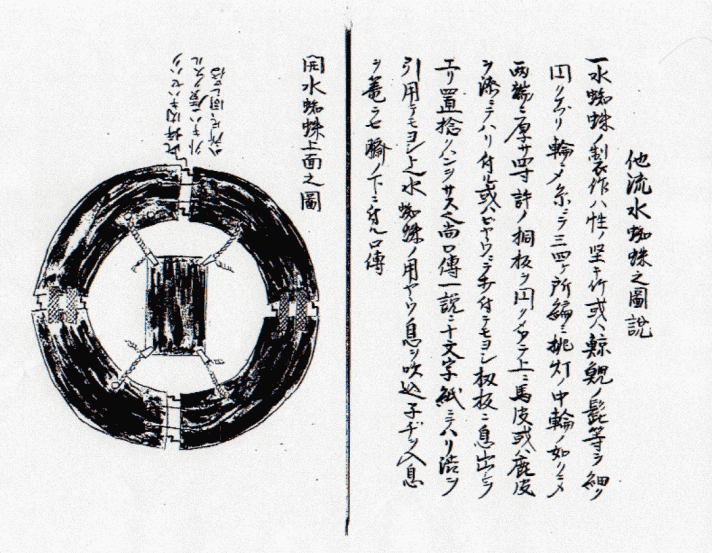 A page of fantasy tools from Vol.9 of the Bansenshukai. This is the infamous "Mizugumo" or water-spider. Originally this was shown as a pair of shoes that were worn by ninja to "walk on water" in Iga-ryū Ninja Museum. Today they think it is probably more like a rubber lifesaver ring.
A page of fantasy tools from Vol.9 of the Bansenshukai. This is the infamous "Mizugumo" or water-spider. Originally this was shown as a pair of shoes that were worn by ninja to "walk on water" in Iga-ryū Ninja Museum. Today they think it is probably more like a rubber lifesaver ring.Let me give you a cultural example from our Western historical background to highlight the absurdity of the Bansenshukai as a legitimate document . By training I am a student of Classical History. I have a degree in Classical Civilisations from UCD, with a minor in archaeology. I am academically trained to look at primary source documents and analyse and interpret them.
If I am presented with the Iliad or the Odyssey or Aeneid, I study them with respect to the cultural impact of these stories. I look at the tradition of story-telling itself. I look at the language. If I am presented with a document that pertains to hold the military secrets of the Myrmidons (Achilles warriors) and the diagrams of their flying ships, or the plans to build a giant wooden horse...well I’d be very very dubious.
I do not read the Iliad and think that Odysseus was a Greek “ninja” commander because he designed a stealth attack to enter the walls of Troy inside a wooden horse. (Very “ninja”). I don’t then go and look to construct a wooden horse and practice sneaking inside a building and claim that I am practising a legitimate military tactic or that I am Greek Antiquity Special Forces, as certain authors do about the Bansenshukai (13), because that is absurdly ridiculous.
No, I would look at the culture of fictionalising events in the light of that culture and in combination with the physical evidence suggest that the wooden horse was a metaphor for an earthquake.
In the same way I do not look at the description of the armour made for Achilles by Hephaestion, the blacksmith of the gods, or the shield that he made for him - which is described in wonderful detail, as blueprints for genuine military armour or tools of war in the classical period. They are storytelling devices.
In the same way I acknowledge the Shield of Achilles as the first example of cosmological mapping in the history of Greece, I don’t then interpret that information as military strategy or planning.
I appreciate the Iliad for what it is, a cracking good story and a vital part of literary history, and cultural mythology. I do not read it as a military manual. I certainly do not judge it as an accurate historical account of a military engagement.
The Bansenshukai is equally fictional. Citing mythological beings and weapons and tactics that were rarely, if never used or even real. The key difference is the Iliad is a wonderful story and worthy of study. The Bansenshukai is not, which is why credible academics do not bother with it in the slightest and why it was ignored until unscrupulous men decided to use it to legitimise their made up arts.
Footnotes
(1) Hall, Dr,David; "Encyclopedia of Japanese Arts", Kodansha 2012, pg 459.
(2) “The original documents are in ‘old Japanese’ thus Dr Nakashima Sensei will translate this into modern Japanese. Yoshie Minami will then take that translations and render them into a basic English format. Finally Antony Cummins will create the full English version...we are working from we are working from the Tokyo National Diet Library version, we used modern Japanese for anyone to read as Kanbun can be difficult” https://www.martialartsplanet.com/threads/antony-cummins-latest-news.96472/page-5
(3) Turnbull, Dr. S. Ninja: Unmasking the Ninja. Frontline, 2017
(4) Ron Roy Translation. http://www.ninpo.org/historicalrecords/bansenshukai/bansenshukai_vol_1.html
(5) Cummins, A. Miami, Y. Book of the Ninja, Watkins Publishing LTD (10 Oct. 2013)
(6) Hall, Dr. David A. Encyclopedia of Japanese Martial Arts. Kodansha 2012
(7) Cummins, A. Miami, Y. Book of the Ninja, Watkins Publishing LTD (10 Oct. 2013), pg.42.
(8) Owada, Tetsuo (1973). Ōmi Azai Shi (Tokyo, Shin Jinbutsu Ōraisha), p. 81
(9) Owada, Tetsuo (1973). Ōmi Azai Shi (Tokyo, Shin Jinbutsu Ōraisha), pp. 82-84.
(10) Azai Sandai ki Volume 11 http://yoshiok26.p1.bindsite.jp/bunken/cn14/asai12.html (Hikone City Board of Education (no date). ‘Watashi no machi no Sengoku’: Dodo uji to Dodo yakata (information sheet) (Hikone City).
(11) Turnbull, Dr. S.Ninja: Unmasking the Ninja, Frontline, 2017
(12) Hall, Dr. David A. Encyclopedia of Japanese Martial Arts. Kodansha 2012
(13) You may think I am exaggerating, but this is the deluded beliefs put forward about the ninja. For example, noted fraud Antony Cummins asserts in all seriousness that reading the Bansenshukai, a period fantasy document, "allows a single human to train diligently to become a clandestine operative with knowledge that rivals modern Special Forces”. (Cummins, A. Minami, Y. Book of the Ninja, Watkins, 2013). As a student under Special Forces instructors like Tim Larkin and Jim Wagner, with many friends who served, and those who are still on active service, I find this comment both ignorant and distasteful. It is the macho posturing of someone who has no clue what those men and women go through and what is asked of them.
You've been reading about the Bansenshukai. Check out the next part, the Ninpiden Here.
Click here to return to the Way of the Samurai Home Page.
Free Samurai E-books
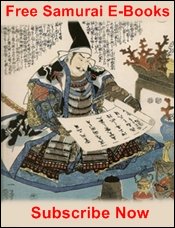
Get Free Exclusive Samurai Guides and E-books

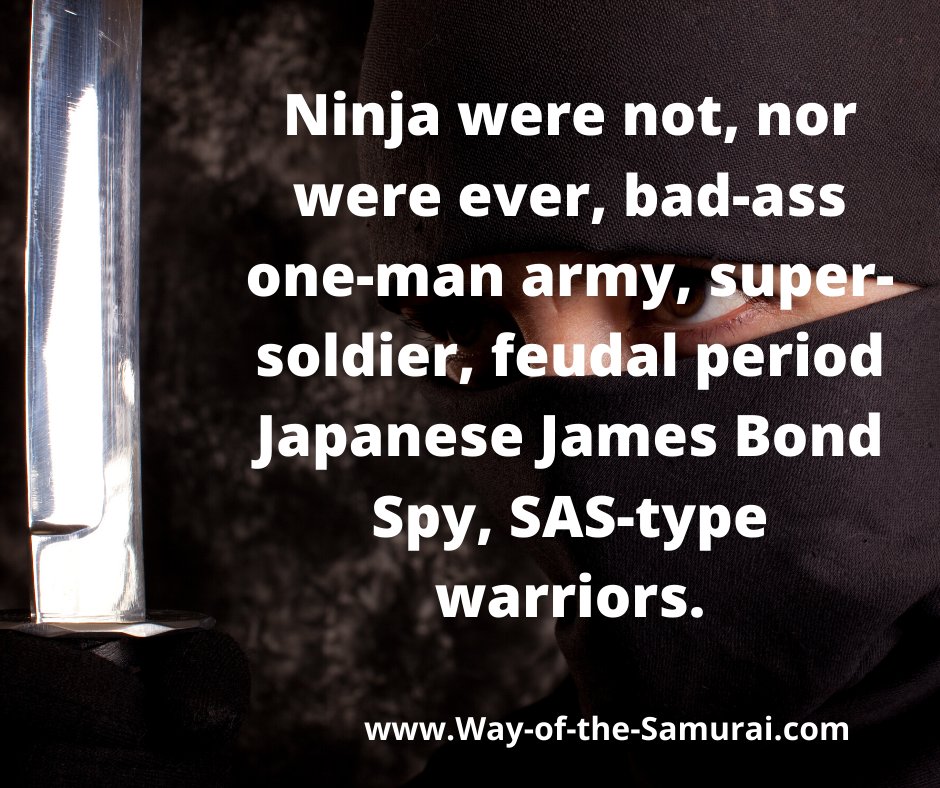
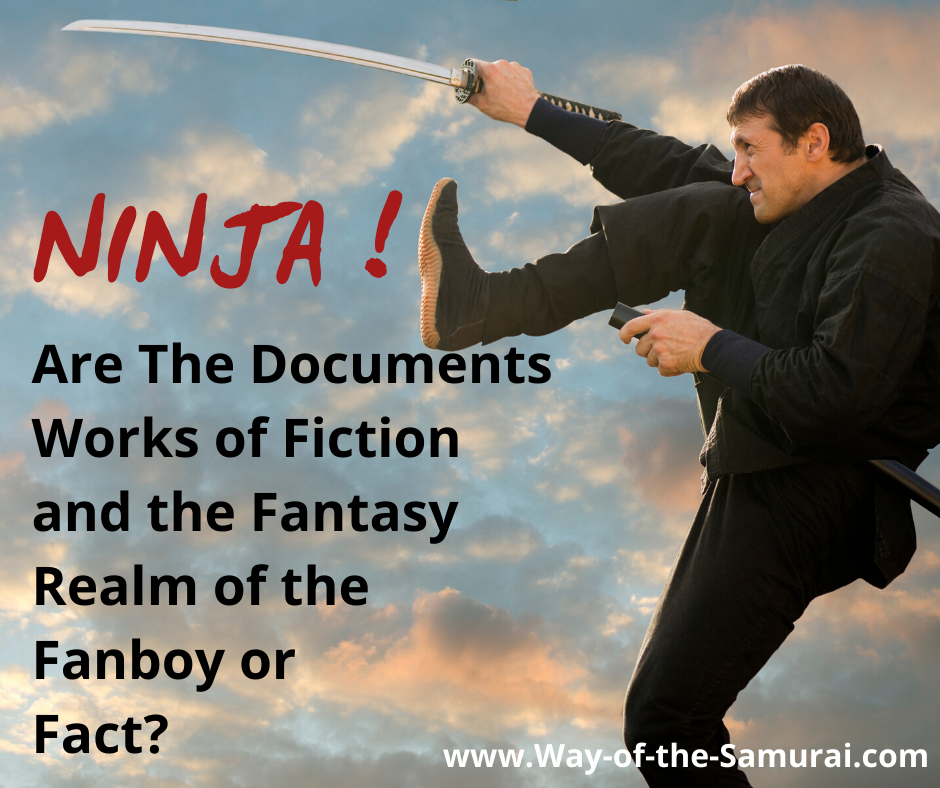
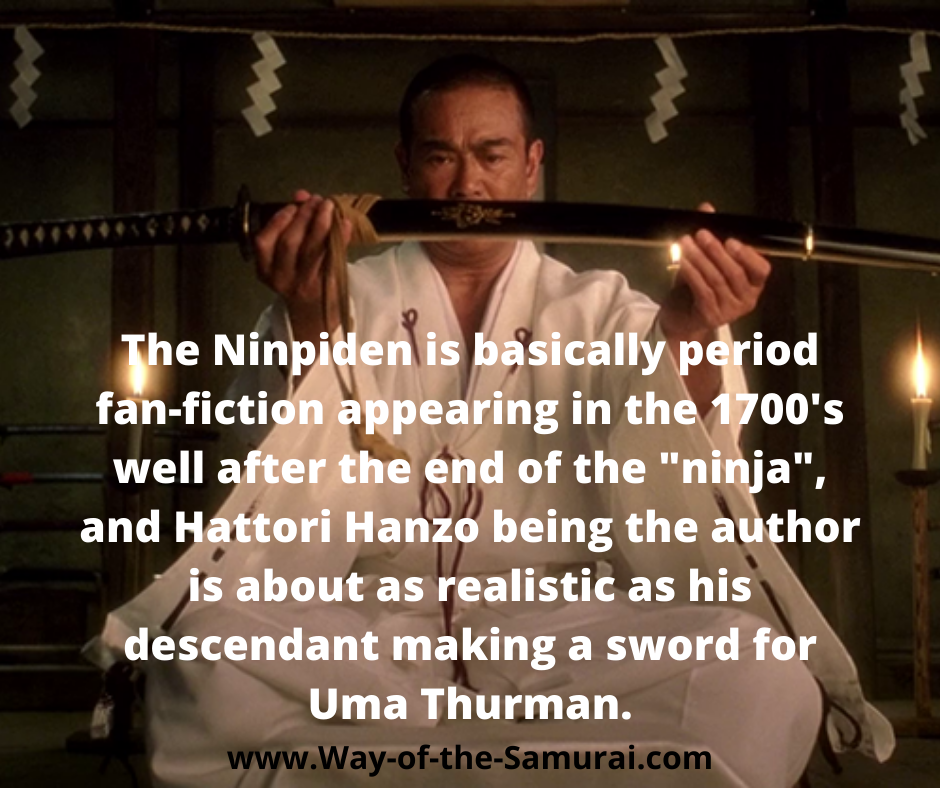




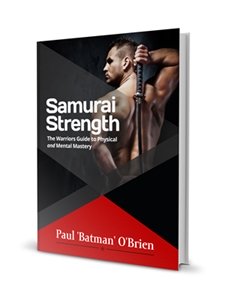
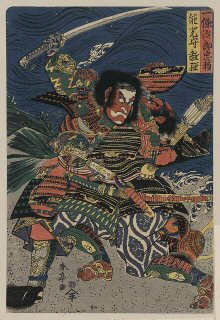
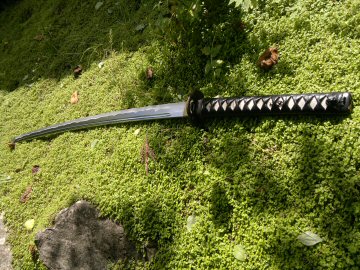
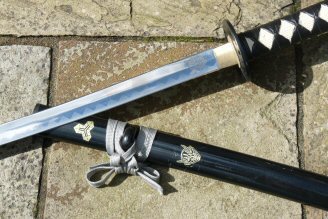
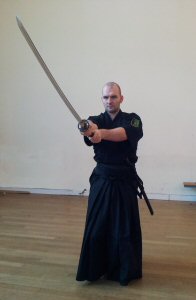
New! Comments
Have your say about what you just read! Leave me a comment in the box below.